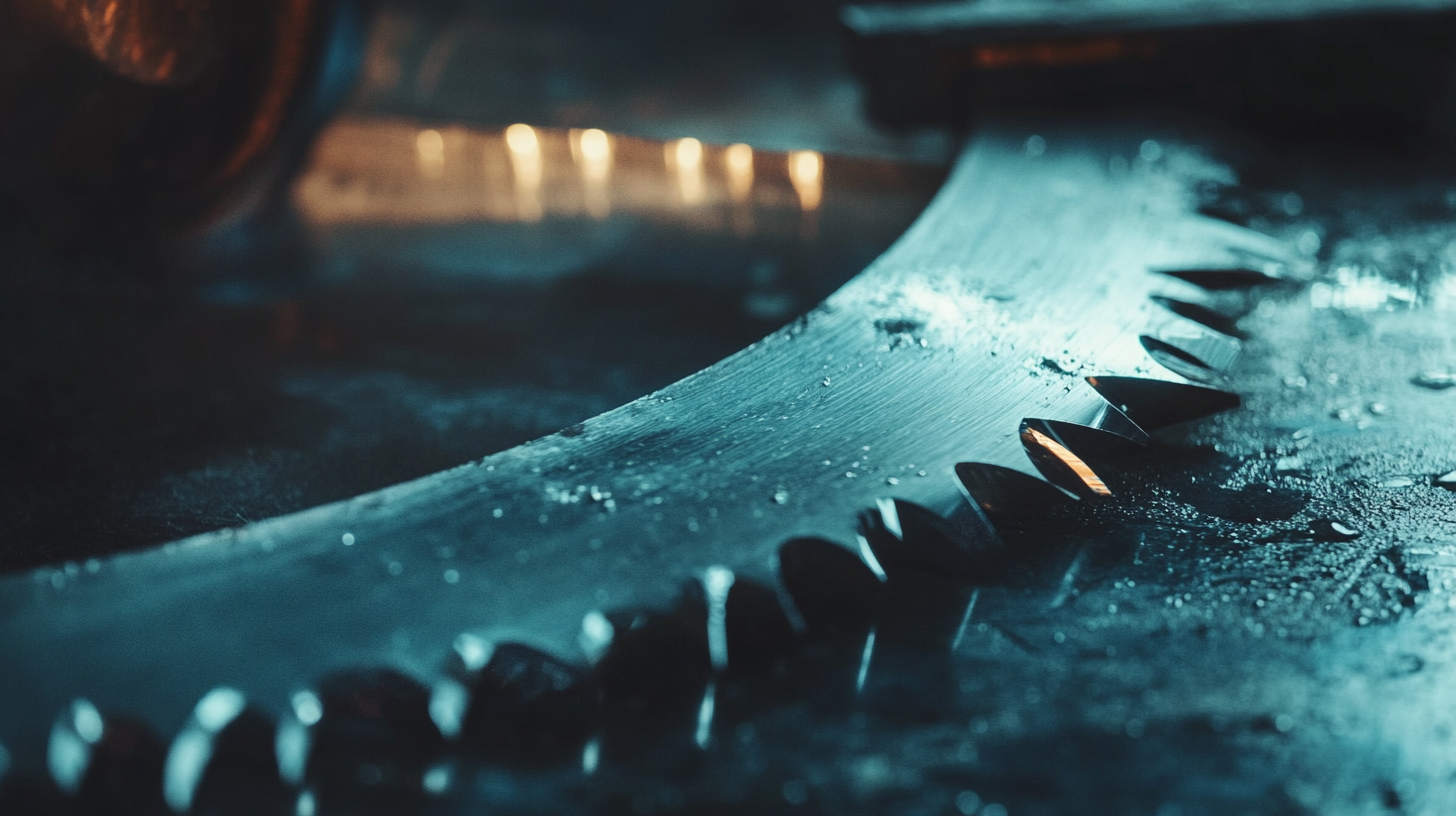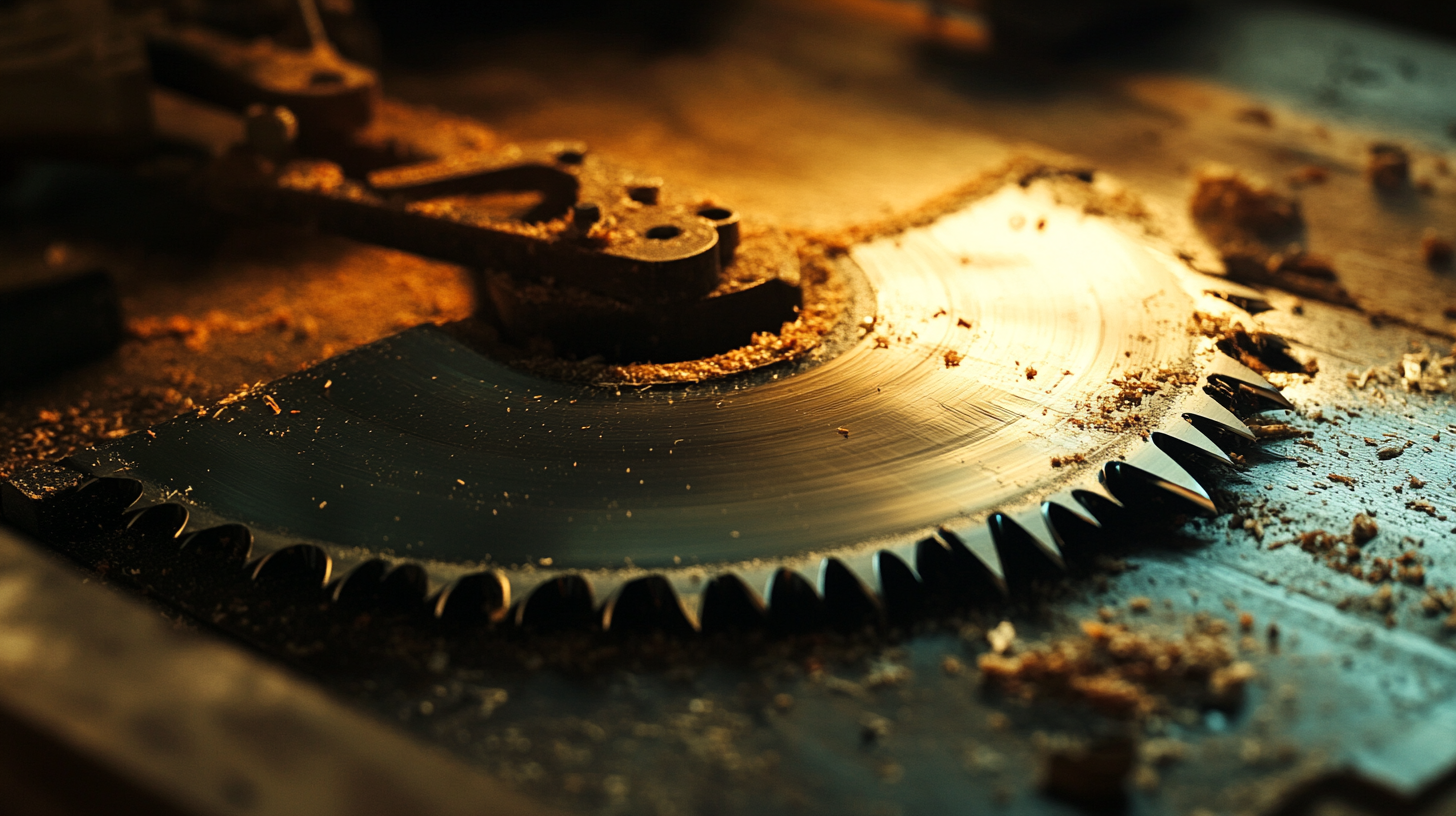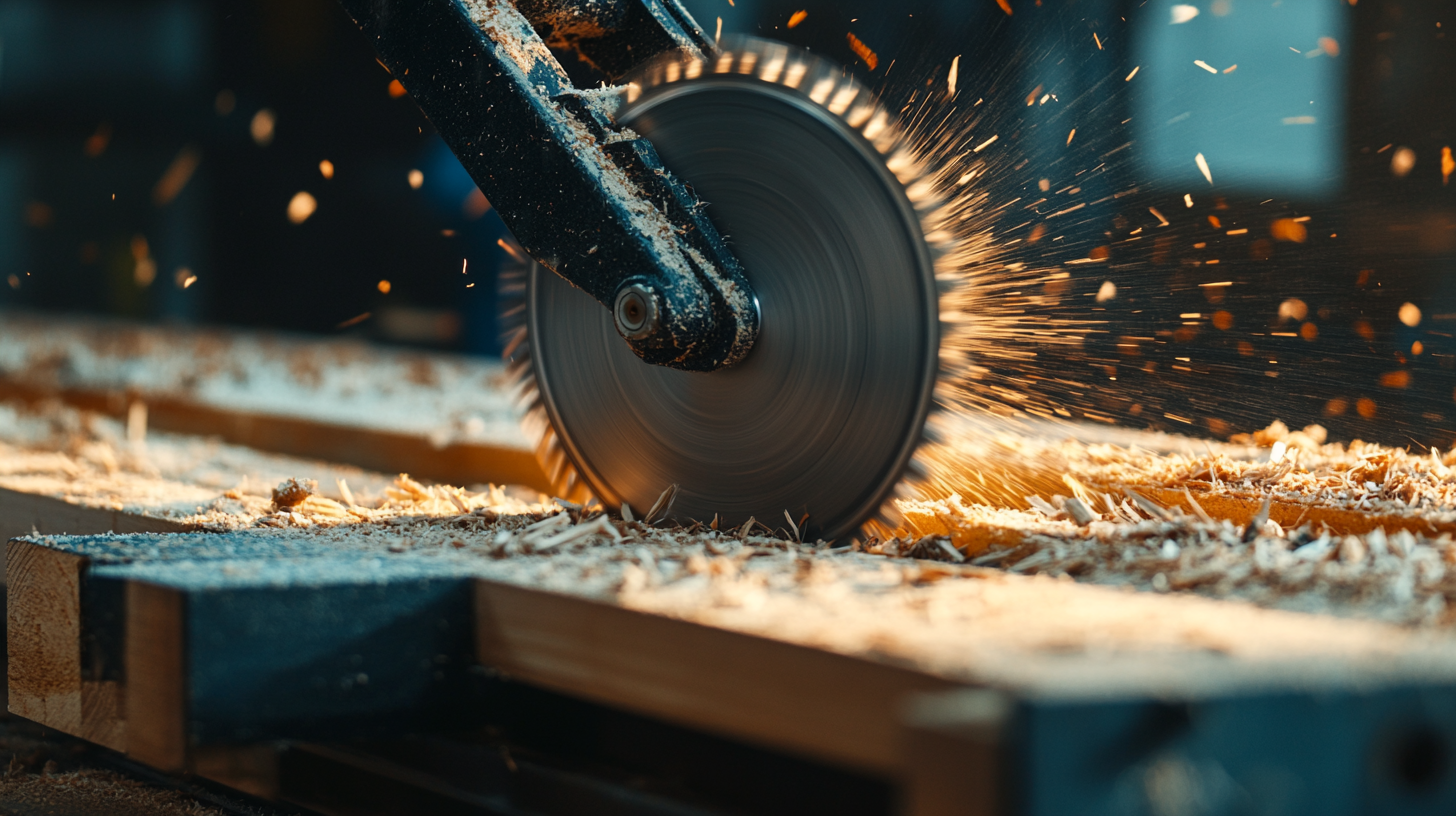Essential Techniques for Maximizing the Use of Saw Blades
In the woodworking and metalworking industries, the efficiency and precision of cutting operations significantly depend on the quality and handling of saw blades. According to a report by the Freedonia Group, the demand for saw blades is projected to reach $2.2 billion by 2025, driven by growth in construction and manufacturing sectors. This surge underscores the importance of understanding how to maximize the lifespan and performance of saw blades, which can lead to reduced operational costs and enhanced output.
Mastering essential techniques for saw blade usage is crucial for professionals aiming to optimize their cutting processes. Inefficient blade handling not only compromises the quality of the finished product but also leads to increased downtime and higher replacement costs. As highlighted in a research study by IBISWorld, minor improvements in blade maintenance can boost productivity by up to 30%. Therefore, adopting best practices in saw blade utilization is vital for sustaining competitive advantages in an increasingly demanding market.

Understanding Different Types of Saw Blades and Their Applications
When it comes to maximizing efficiency in woodworking and metalworking, understanding the various types of saw blades and their specific applications is crucial. Saw blades are not a one-size-fits-all tool; each type has distinct features suited for different tasks. For example, bi-metal band saw blades are known for their durability and versatility, relying on different tooth types like regular, hook, and skip to optimize cutting performance based on the material being processed. Regular tooth blades are ideal for wood, while hook tooth blades excel in cutting thick materials, making them essential in industrial applications. Miter saw blades also require thoughtful selection, as their design significantly affects the finish and accuracy of cuts. A good miter saw blade has a combination of high teeth count for smooth finishes and proper carbide tipping to enhance durability. Understanding the blade’s tooth configuration can make a notable difference; for instance, blades with negative hook angles provide cleaner cuts in precision work, while positive hook angles are better suited for aggressive cuts in softer materials. As the saw blades market is projected to grow steadily, staying informed about these essential factors ensures that both hobbyists and professionals can choose the right tool for the right job, ultimately improving efficiency and quality in their projects. Recognizing the right application for each blade type is not only beneficial for performance but also enhances safety in the workshop.

Key Factors Influencing Saw Blade Performance and Longevity
When it comes to maximizing the performance and longevity of saw blades, understanding the key factors that influence their effectiveness is essential. One significant element is the material of the blade itself. According to industry reports, high-speed steel blades, while cost-effective, tend to wear out more quickly than carbide-tipped blades, which can last up to 10 times longer in demanding conditions. This decision on blade material can directly affect both performance and overall cost-efficiency in a workshop setting.
Another crucial factor is the type of saw and the application for which the blade is intended. For instance, blades designed for cutting wood generally have fewer teeth and larger gullets to efficiently remove sawdust, whereas blades for cutting metals need a finer tooth configuration to handle the material's density. Research from the Woodworking Machinery Industry Association shows that using the appropriate blade for specific tasks can enhance cutting speed by as much as 25% while also reducing wear, leading to longer life and consistent performance.
Blade maintenance also plays a vital role in ensuring optimal performance. Regular cleaning and sharpening can increase a blade's lifespan significantly. An independent study indicated that consistently maintained blades can cut cleaner and last 30% longer than neglected ones. It's essential for operators to invest time in maintenance routines, as this not only extends the life of their tools but also ensures safety and efficiency in operations.

Proper Maintenance Techniques for Extending Saw Blade Life
Proper maintenance of saw blades is crucial for maximizing their effectiveness and extending their lifespan. One fundamental technique involves regular cleaning. Saw blades accumulate debris, resin, and pitch from constant use, which can affect their performance. To maintain optimal cutting efficiency, it is essential to clean the blades after each intensive use. A simple solution of warm soapy water or specialized blade cleaners can help remove most deposits. For stubborn residue, a soft brush or a cloth can be employed, ensuring that the blade's surface remains intact and free of destruction.
Another significant aspect of saw blade maintenance is proper storage. Blades should be stored in a dry, cool place and ideally placed in protective cases or sheaths to prevent accidental damage. Humidity and extreme temperatures can lead to rust and warping, which negatively impact cutting precision. Additionally, keeping blades organized prevents them from clashing with each other, which can dull their edges or cause nicks.
Finally, regular sharpening is essential for maintaining the performance of saw blades. Dull blades not only make cutting more laborious but also increase wear on the saw itself. Depending on the frequency of use, sharpening should be scheduled regularly to ensure efficiency. Using a sharpening service or honing the blade manually with the correct tools can rejuvenate the cutting edge, making sure that your saw blades remain sharp and effective over time. By following these maintenance techniques, users can expect a noticeable improvement in the performance and longevity of their saw blades.

Safety Practices for Using Saw Blades in Various Work Environments
When it comes to using saw blades in various work environments, understanding and implementing safety practices is paramount. The saw blade market is projected to see steady growth over the next decade, making it even more crucial for users to prioritize their safety. With the increasing popularity of power tools and the demand for precision cutting in construction and woodworking, awareness of the potential hazards associated with saw blades is more important than ever.
One of the major health risks linked to using saw blades is silicosis, a progressive lung disease caused by inhaling silica dust released during cutting operations. This emphasizes the need for personal protective equipment (PPE) such as masks and respirators when working in dusty environments. Despite the known dangers, many employees often cite reasons for not using PPE, ranging from comfort issues to a lack of available equipment. It is essential for employers to create a culture that prioritizes safety and ensures that all necessary equipment is accessible and comfortable for their workers.
Moreover, incidents like the recent recall of miter saw blade guards by Harbor Freight Tools serve as a reminder that equipment safety features must not be overlooked. The table saw, often regarded as one of the most dangerous tools in a workshop, requires operators to be vigilant and properly trained in its use. Regular maintenance and proper handling techniques are vital to mitigate risks. By implementing robust safety protocols and fostering an environment of safety awareness, workers can significantly reduce the likelihood of accidents and health hazards associated with saw blade operations.
How to Select the Right Saw Blade for Specific Materials and Projects
When it comes to selecting the right saw blade for specific materials and projects, understanding the different types of blades is crucial. Each material, whether it’s wood, metal, or plastic, requires a blade specifically designed to tackle its unique characteristics. For instance, a fine-toothed blade is ideal for intricate cuts in hardwood, while a coarse-toothed blade works best for quicker cuts in softwood. When choosing a saw blade, consider not only the type of material you are working with but also the intended finish. A proper selection can drastically affect the quality of your work and the life of your tools.
Additionally, the material of the blade itself plays a significant role. Blades made from high-speed steel (HSS) are excellent for cutting tougher materials, while carbide-tipped blades provide superior durability and maintain sharpness longer, making them suitable for frequent use. Furthermore, consider the kerf width; a thin kerf blade minimizes waste, while a thicker kerf blade may offer more stability for certain types of cuts. By evaluating these elements carefully, you can ensure that you choose a saw blade that not only fits your specific task but also optimizes performance and efficiency.
Lastly, take into account the direction of the teeth and the blade design. For instance, blades with alternating top bevel teeth can help achieve a cleaner cut on various substances. Understanding these nuances allows you to match the right blade to your project accurately, ultimately enhancing both the quality and precision of your work. Investing time in this selection process can lead to incredibly satisfying results and a more enjoyable sawing experience.
